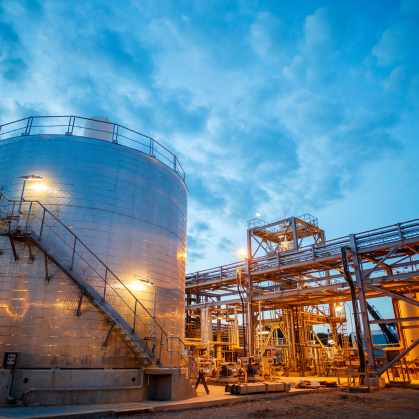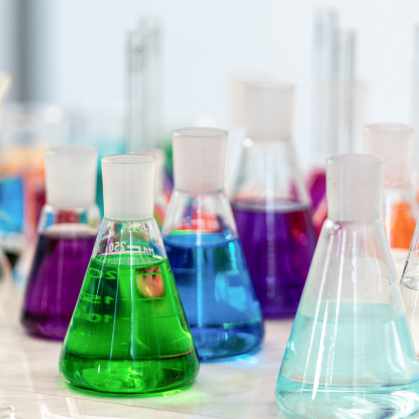Chemical Processing
Chemical processing plants manufacture chemicals to be used on a big scale. They make petrochemicals, polymers, plastics, fibers, pesticides, herbicides, acids, alkalis, and more! There are over 12,000 chemical processing plants all across the United States. The majority of them produce basic chemicals that are used in a variety of industries such as manufacturing, agriculture, and pharmaceuticals.
The main concern of chemical processing plants in recent years is to produce chemicals safely and cleanly to avoid chemical accidents and to not pollute the environment.
Chemical Processing
Chemical processing plants sometimes use raw materials that are converted into chemicals. This can be a very intrinsic process in which air particulate can be generated at the various stages. Processes like mixing, conveying, transporting can generate dusts.

Dust Types
- Smoke & Fumes
- Chemical Dusts
- "Nuisance" Dusts

Health Risks
Workers can be exposed to a number of health hazards at a chemical processing facility. Airborne dusts from chemicals can cause eye/skin irritation and respiratory issues. It should be the goal of every plant to ensure safety by preventing injuries, health problems, or in worse case scenarios: dust explosions. To protect workers from being exposed to toxic dusts, proper ventilation and dust collection should be implemented.

OSHA Regulations
Like any other industry, chemical processing plants are subject to regulations by the Occupational Safety and Health Administration. Workers can wear PPE such as masks and respirators. Standard # 29CFR 19110.134 specifically states to control diseases caused by breathing in harmful dusts/fumes through engineered control measures. This can mean proper ventilation and other controlling measures to limit worker exposure. If regulations such as this are not followed; plants can be fined for safety violations.

Combustible Dust Risks
A lot of dust generated in chemical processing is combustible. This means that it is extremely likely to combust when ignited by an ignition source. For example, grain dust is highly combustible. Ignition sources can be a spark generated from equipment, electrostatic discharges, or even something as simple as a cigarette butt. That is why it is so important that work areas are kept clean and dust-free.
Many chemical dusts are highly explosive. Over the years there have been numerous explosions that have resulted in mass causalities.




